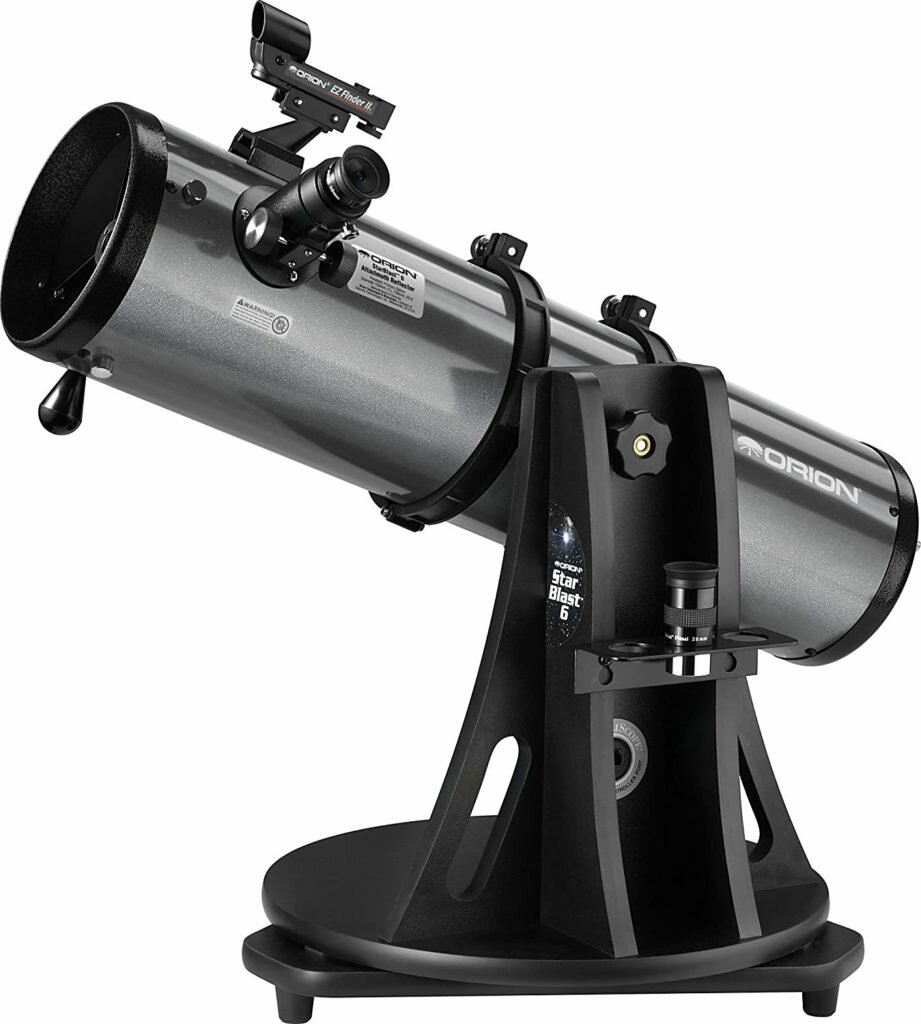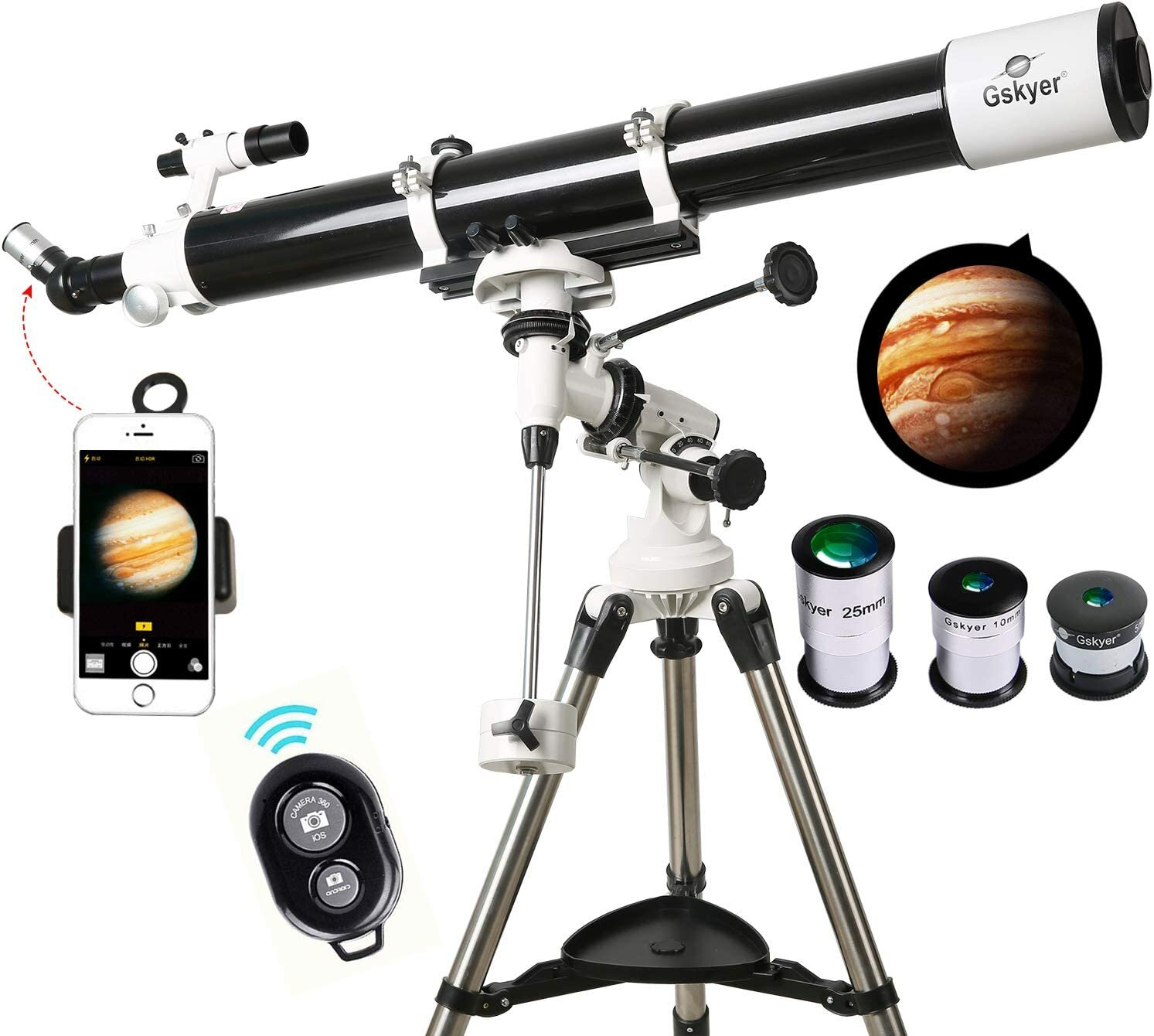Best astronomical telescope for beginners
Perhaps you have long had a passing interest in astronomy and spend a lot of time gazing up at the night sky. Or perhaps you've only recently developed an interest in the marvels dangling over our heads. In any case, you've made the decision to move on and purchase your first telescope. You find numerous exciting things when you flip through the pages of Astronomy. But you're also perplexed at the same time. Which sort should you purchase? How much money actually need to be spent? Which one suits you the best?
Whether it's your first or tenth telescope, you must consider all of these factors before making a purchase. This review will provide some clarification.
Orion 10016 StarBlast 6 - Best astronomical telescope for beginners


The Orion 10016 StarBlast is a terrific option for the ideal beginner's telescope since it employs a straightforward point-and-view tabletop telescope which can be ideal for the beginning astronomer. It is also entertaining and simple to use.
You can view the moon and planets in excellent detail, and any star clusters, nebulas and galaxies you're looking for, thanks to its adaptable performance and robust 6′′ aperture reflector optics.
Its lightweight, tabletop form makes it incredibly portable at just 23.5 lbs. In addition to being simple to set up and operate, as we've already discussed, it is also simple to assemble and requires no complicated assembly.
You also receive a pair of 10mm and 25mm Sirius Plossl 1.25′′ telescopic eyepieces, an EZ Finder II pointing tool, Starry Night software, an eyepiece rack and a few more extras when you buy the Orion 10016 StarBlast.
The red-dot sight feature on this telescope makes it quite simple for beginners to aim the telescope. Every celestial body in the sky can be pointed out using the telescope by following the aligning process.
You can change from lower to higher power views to concentrate on the desired object.
Pros
- High optical power for a novice telescope
- You may improve with detachable parts
- It is really simple to use and setup
- Able to use the software provided
- Sturdy base and adjustable altitude tension to facilitate focus
- Two eyepieces, small and light design
Cons
- You have to put this telescope on something
- The focuser is manufactured with plastic
Gskyer Telescope EQ901000


Your purchase of the Gskyer EQ901000 is supported by a 1-year guarantee. This device is an excellent tool for beginners to use to start exploring what lies above because it has an unmatched clarity that you simply won't find anyplace else.
It is just as simple to put together as it is to concentrate on and utilize. You can use your naked eyes to bring faraway objects as near as if they were directly in front of you.
The Gskyer EQ901000 has a 1000 mm focal length and a 90mm aperture. The field of vision can be simply altered to be as broad or narrow as desired.
Additionally, the Gskyer EQ901000 has three distinct eyepieces: a 25mm, a 10mm, and a 5mm eyepiece. The features you require can be chosen, particularly if you require a higher magnification. With this device, you can begin with a 600x magnification and even improve it if necessary.
Moreover, this telescope has an EQ sophisticated equatorial mount that you can use to point and observe in any direction. In addition to the product, you will also get a backpack, a tripod, 3 eyepiece lenses (25mm, 10mm, and 5mm), a mount, three x Barlow lenses and a protective bag with your order.
Pros
- The telescope has a large aperture for excellent focus and a lengthy focal length that is ideal for adjustments.
- Simple to install, set up, and use
- The tripod's barrel is made of an aluminium alloy and stainless steel.
- Additionally, the telescope lessens glare.
Cons
- A bit weighty for transport
- Low magnification
- Soft case that isn’t durable
Amazon Link: https://www.amazon.com/Gskyer-Telescope-EQ901000-Astronomy-Technology/dp/B01DNMAZN8
Conclusion
There will be a significant variation based on what you wish to view and how adept you are at finding specific objects. With the exception of Pluto, you should have the ability to see all the planets from a distance. These planets have distinctive features that can be seen, such as Mars' ice caps and Jupiter's Red Spot.
Finding them will undoubtedly be much easier if you know how and where to look.
Finding a position where there aren't many city lights in the area around you is important. These places are significantly better to see stars if you are just using your naked eye to observe the night sky. Additionally, a clear sky is required in order to make out some celestial bodies. If you can, choose a night with few nearby lights and a majority of clear skies—this is the best time to go exploring in an open field.
We hope that our buying guide has assisted you in selecting the best astronomical telescope for beginners. Enjoy the starry night!
